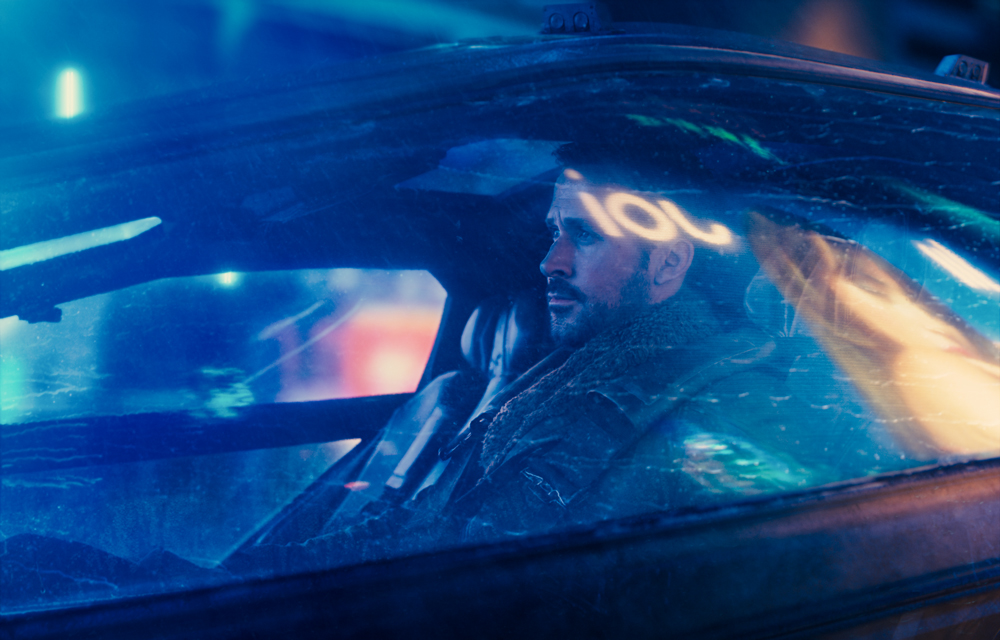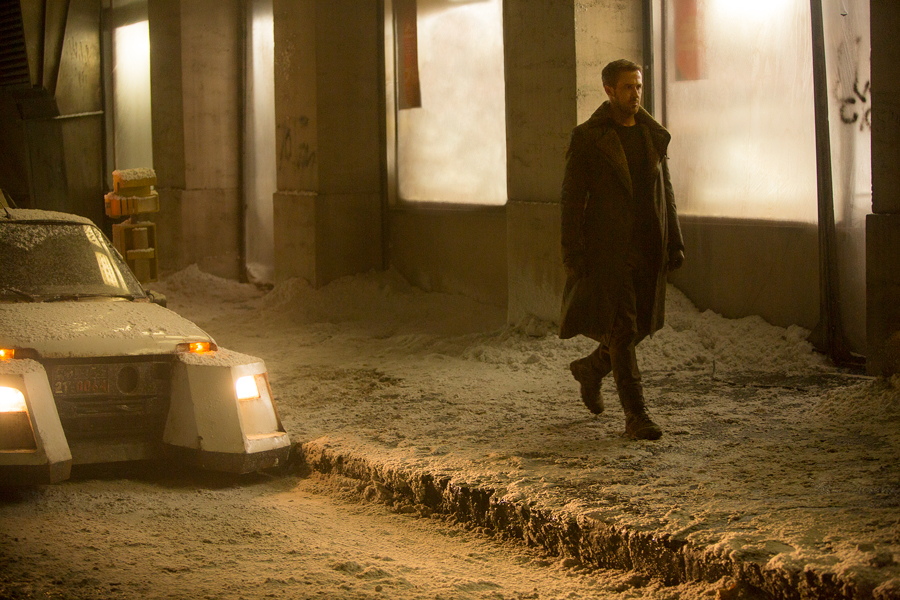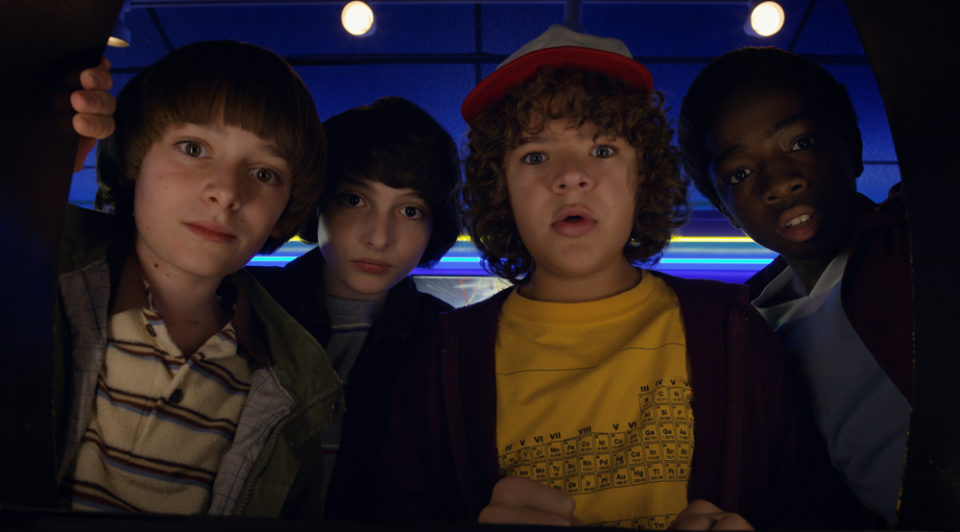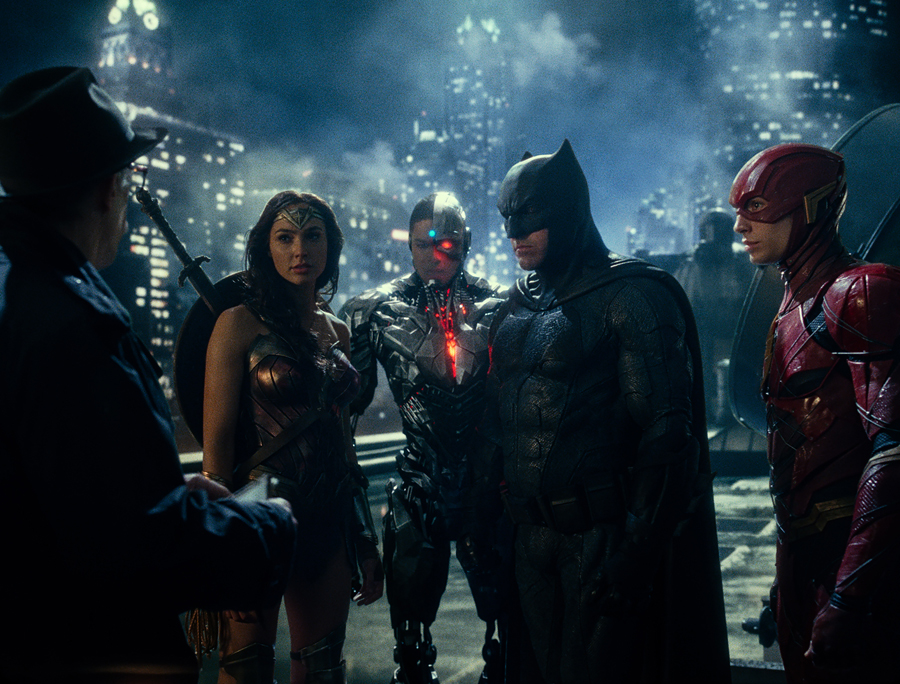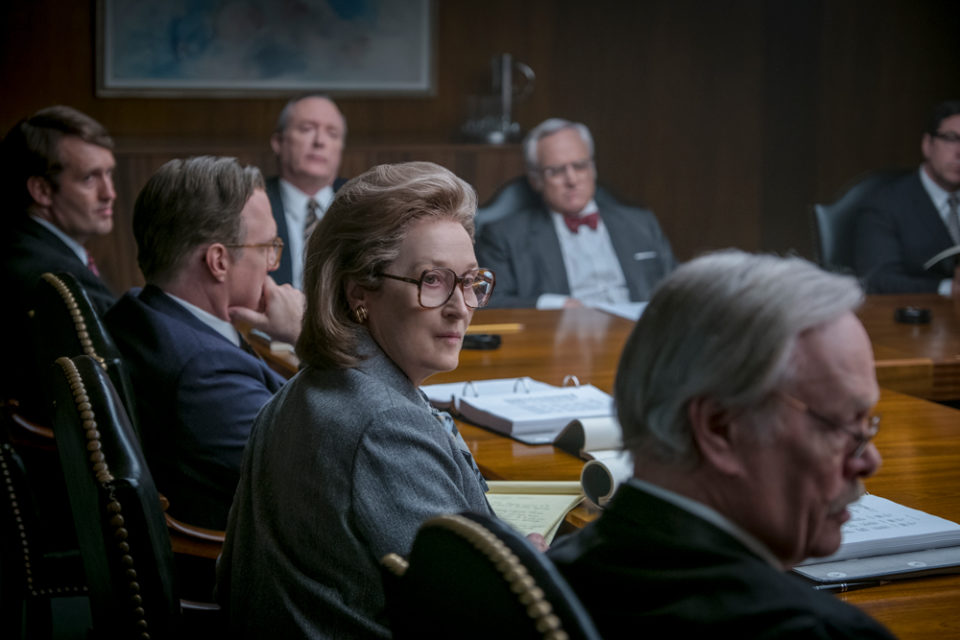Warning: This piece contains major spoilers.
The sink of leather armchairs and the fug of stale popcorn. The cinema is nearly empty this Wednesday afternoon as I sit down to watch Blade Runner 2049 with my lover, M. He’s a filmmaker who should be at home editing the corporate videos that are his bread and butter. I’m a freelance film critic, and I should have seen this feverishly anticipated sequel to Ridley Scott’s 1982 sci-fi classic, Blade Runner, at the distributor’s media preview last week. But some films are best seen with a loved one – especially if you’re not called upon to rush out a review.
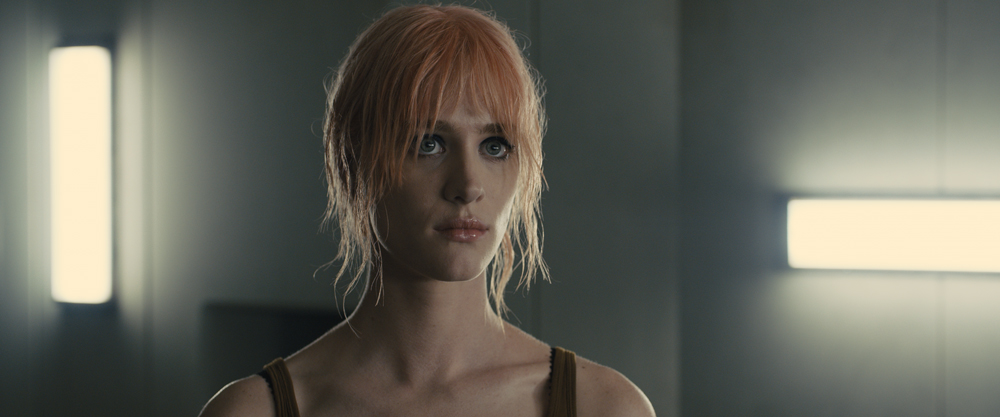
Mackenzie Davis as Mariette in Blade Runner 2049. Pictures and international distribution by Sony Pictures. Photo courtesy of Double Negative © 2017 Alcon Entertainment, LLC. All Rights Reserved.
The feeling of skipping school to see a movie is still slightly thrilling, though these days the school hours that rule us belong to our children. When we showed them the original Blade Runner in preparation for this sequel, they were nonplussed, with the determination of teenagers who must resist being impressed by anything their parents revere. “There’s not much story,” they said. “It’s a bit boring. Is Deckard a replicant? Who cares?”
“But what about the cinematography?” said M, dismayed. “That light, those shadows. The score by Vangelis?”
“You’ve got to understand,” I explained, fancying this to be a teachable moment, “this was a fully realised futuristic world as we’d never seen it before.”
“Yeah, that was the eighties,” they said.
And so we decided to spare them the sequel and spare ourselves their withering glares whenever we hold hands or kiss. These days we feel the need to escape their disdain, in the way we used to need to escape the prying eyes of the world when we were having an illicit affair. Those were the days, three years ago, when every moment together might be the last. We lived in the shadows, often in the plush darkness of cinemas, and had never met each other’s children. There was no future for us; I had a family I could never break.
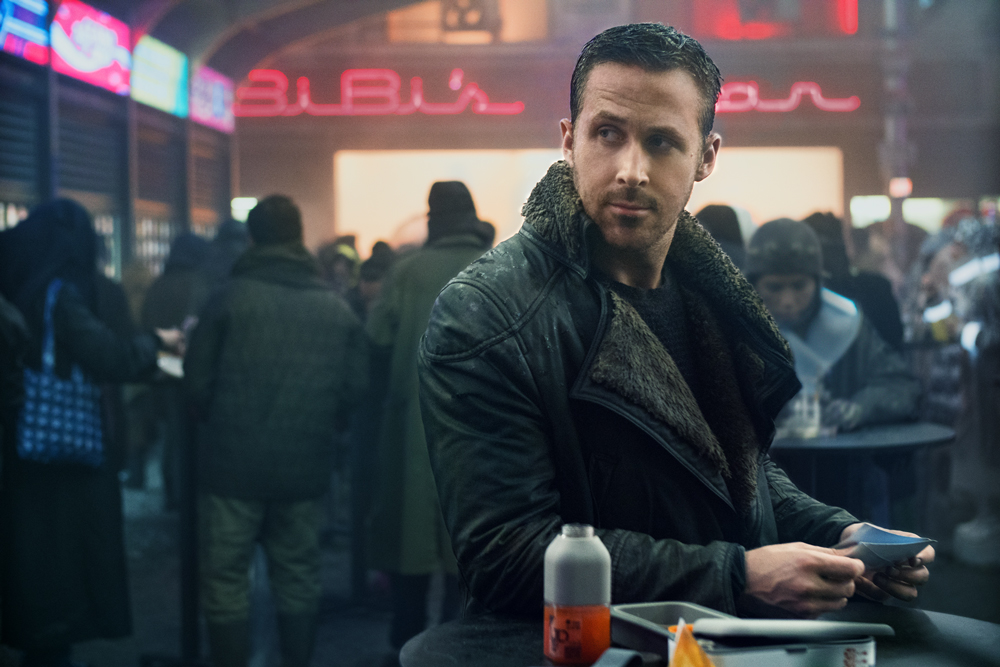
Ryan Gosling as K in Blade Runner 2049. Photo by Stephen Vaughan ©2016 Alcon Entertainment, LLC All Rights Reserved.
Blade Runner 2049 is a love story. Like the earlier film, it’s also a neo-noir detective story, and, as with all good science fiction, an interrogation of what it is to be real, to be human, to have a ‘soul’, if such things exist. The screenplay is by Michael Green (Logan, Alien: Covenant) and Hampton Fancher, who also wrote the earlier Blade Runner, loosely adapting Philip K. Dick’s 1968 novel Do Androids Dream of Electric Sheep?. That film was set in a drizzling dystopian Los Angeles of 2019 where LAPD ‘blade runners’ were employed to seek out and ‘retire’ rogue replicants – androids created to look exactly like humans and to do the dangerous work on other worlds, but forbidden on earth.
While Ridley Scott returns as executive producer, Blade Runner 2049 is directed by Denis Villeneuve, the French-Canadian who gave us last year’s intelligent, restrained and sometimes sublime Arrival, starring Amy Adams as a linguist attempting to communicate with tentacled ink-squirting aliens. Villeneuve brings to Blade Runner 2049 that same serious and unhurried (some might say too serious, too unhurried) intent. Where Scott’s sci-fi direction so often veers towards the obvious and even the tacky (remember Prometheus and The Martian?) Villeneuve is sophisticated, capable of great emotional delicacy.
Not even the most ardent fans of the magnetic Roy Batty (Rutger Hauer) death scene, or of the stoic declaration of love from blade runner Rick Deckard (Harrison Ford) to the replicant Rachel (Sean Young) would go so far as to call them delicate.
“You only like films about relationships,” M says to me sometimes after we’ve disagreed about a film that he loves and I don’t, or vice versa. He adored Scott’s The Martian, watched it two times and then listened to the audio book, fascinated by the story of a solitary botanist (Matt Damon) stranded on Mars and trying to “science the shit out of it” to get home. I rest my case on that single line of dialogue. But perhaps M is right, the cinema that really turns me on is the kind that unfolds the complexity of human psychology and the relationships between people. Or between people and androids or holograms who seem to be people.
And so to Blade Runner 2049, set thirty years later in a world even bleaker and darker than the first, though still beautifully and convincingly realised, thanks in large part to the cinematography of Roger Deakins and the stunning production design of Dennis Glassner. The weather is relentlessly awful, switching for variety between rain and sleet and snow. It’s been decades since a real tree grew out of the soil. Honeybees and dogs are either fake or miraculous. Anyone who can afford to leave for brighter planets has fled. The new improved replicants are so reliably subservient they’re allowed to work and live on earth now, though they are harassed and casually insulted like a maligned racial minority. A few of the older rogue replicants are still in hiding and need to be retired.
Our hero, K, is played by Ryan Gosling, an actor whose mournful puppy-dog eyes and wounded, sensitive-but-strong persona have made him every modern woman’s movie boyfriend. My lover looks nothing like Ryan Gosling, and yet it continues to amaze me how I see his likeness in every desirable man on screen, whether it’s in a set of wide shoulders, a kind smile or a graze of stubble on a cheek. So it has been for lovers since the start of cinema, I imagine. M says it’s the same for him, that he sees something of me in every dark-haired beauty, though I can’t truly believe it when he raves about Gal Gadot’s Wonder Woman.
But back to Gosling’s K. He knows and accepts he’s a replicant, created to do a job. Like Deckard before him, he’s employed to find and kill rebellious androids, and like Deckard before him, he’s in love with an artificial woman, but this time she’s not even a ‘skin-job’, she’s a hologram named Joi and she’s played by Ana de Amas, whose own warm wide green eyes and soulful European beauty might well make her every man’s movie girlfriend. She’s adorable. But she’s essentially a sex slave. This worries me, as does the fact that almost all the other important women in the film exist to serve or service male visions. But problematic sexual politics can be discussed in a million other online essays, and here I’m absorbed in the unfolding of this particular and very touching connection between two beings, both of whom are slaves, ‘artificial’ yet capable of rebellion and ‘becoming’.
Joi cooks K’s dinner with care, jazzing up the worm-like protein meals with holographic decoration. (“Don’t fuss,” he tells her gently, and it’s obviously an old routine.) She dons sparkly dresses for dinner, and greets him with kisses he can see but can’t feel. His hands go straight through her. But there’s nothing robotic about the pleasure she seems to take in his company, and in the new ‘emanator’, a piece of technology which allows her to travel outside K’s apartment, accompanying him on errands. Joi is prepared to sacrifice herself for K’s safety, “just like a real girl” and as they uncover together the mystery of a replicant woman who may have given birth, she whispers in K’s ear that he’s special, with a real soul, maybe even “of woman born”.
The idea of this miracle birth – artificially created beings becoming capable of transcending their inbuilt limitations and procreating – is the fascinating driver of Blade Runner 2049. K’s boss, Lieutenant Joshi (an excellent and fierce Robin Wright) wants him to find the child and kill it because its existence “breaks the world” between humans and the others. “We’re all just looking out for what’s real,” Joshi tells K gruffly. But what does real mean?
“I want to be real for you,” Joi says to K one evening when she introduces him to the ‘skin-job’ sex worker she’s employed as her surrogate. “You are real to me,” he argues, but she silences him, focusing on merging her features with the replicant so he can finally make love to a flesh and blood body. It’s a stunning and disturbing scene, far better than the similar one in Spike Jonze’s A.I. love story Her (2013). Here, we see the features of both females wobbling and blurring, the technology struggling and only partially successful in producing the desired effect. But the need and yearning behind that technology seems indisputably real.
“I want to be like a real girlfriend to you,” I used to say to M when we grew tired of the secrecy of our affair. “You are a real girlfriend to me,” he always said. “But I wish I could see you on weekends or at Christmas.”
That was before we knew what was possible if we told the truth and held fast to what felt real. I still think polyamory is an ugly word, but it’s a beautiful concept, as mutable and porous and generous in its way as the word ‘family’, and we’ve created a new one of those, built from elements that seemed so artificial and impossible at the start. We feel so fortunate these days that we’re allowed to be real.
I don’t call M my lover anymore (except when I’m joking, or looking for an arresting first line in a feature article); he’s one of my partners. And as the credits roll on this beautifully made and very long film (nearly three hours long) I think about where it won me, and where it lost me. It’s a story about fathers and children, about memories and war. But it’s the love story – problematic sexual politics and all – that feels so real.



